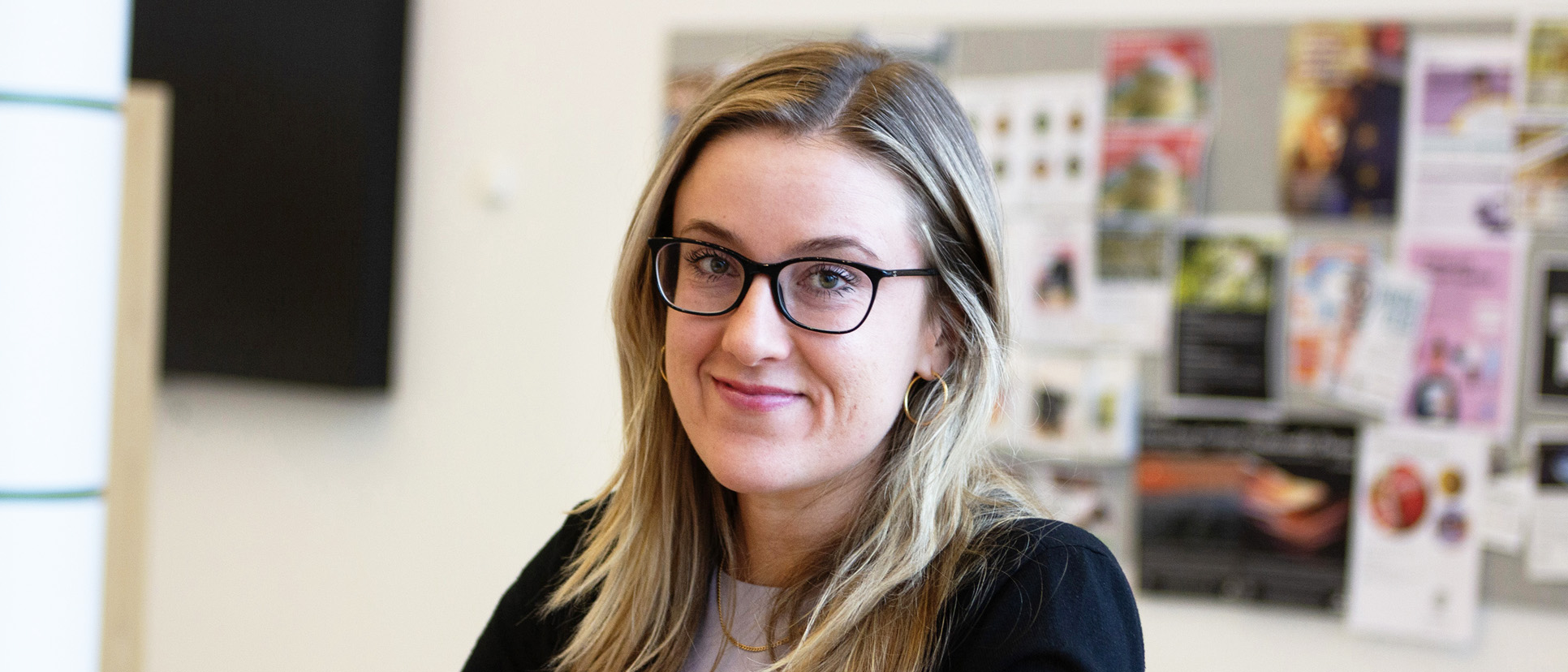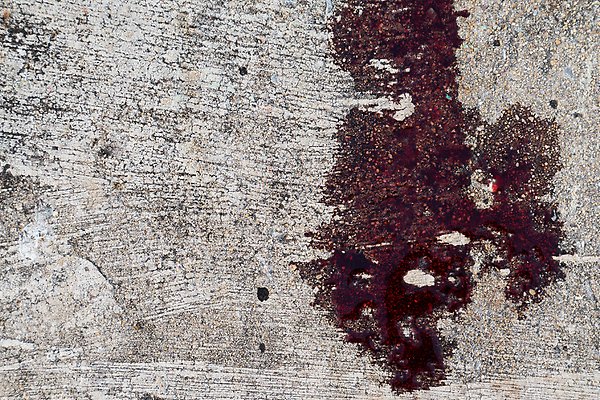Bringing new research about forensic evidence to the courtroom

We want to help practitioners such as judges, forensic doctors and police officers avoid errors by working in evidence-based ways, says Moa Lidén. Photo: Sandra Gunnarsson
Are there better methods of assessing a person’s age, whether a person is lying, or whose DNA is at a crime scene? These are questions in some of the studies that will be carried out in the new research network, EB-CRIME. The ambition is to be able to provide prosecutors and judges with more information when making their decision in various criminal cases.
As a lawyer, you understand legal processes and principles. However, a large part of the work in the court is not about questions that concern the law, it’s instead about the facts, that is, to form accurate opinions about the evidence presented in a case. Is this DNA analysis reliable? Is this age assessment correct?
“This evidence is based on disciplines that we lawyers know nothing about, for example, psychology, genetics, medicine or IT and we, the prosecutors and judges, have to make decisions on a daily basis without having a sufficient amount of information,” says Moa Lidén, Doctor of Law and Psychology at the Department of Law, and Director and Principal Investigator for EB-CRIME.
To provide lawyers and police officers with more knowledge, Moa Lidén, together with a number of researchers in different disciplines, has joined forces and started the network EB-CRIME, the International Center for Evidence-Based Criminal Law (centrum för evidensbaserad straffrätt). This is where evidence, commonly presented in courts today, will be analysed.
How old is the child soldier?
The network will, among other things, take a closer look at age assessments. To determine how old a person is, forensic methods are traditionally used, examining teeth, knees and collarbones.
“We know that there is a margin of error when these types of assessments are used. The question we are interested in is then whether there are better methods.”
The researchers will compare three different ways to determine age: Marie Allen will take a look at DNA methylation, Moa Lidén will study how good we humans are at assessing age, and Anders Hast will use AI technology that reads facial images to see if it this is a better way of determining how old someone is.
“This has become important because you might not always be able to identify the people whose age you are trying to evaluate – you might only have their photograph. And it could be an alleged child soldier for example, how do we determine how old they are?”
Can AI tell us when someone is lying?
The network will also study human statements. A trial usually revolves around determining whether a person is telling the truth. But how do you know? They will be investigating this, among other things, by allowing people to lie, and tell the truth. The statements can then be examined by both human and AI assessors. Is a human or a computer best at revealing lies?
“I would be very surprised if AI works really well. But if AI outperforms human decision makers, then this is a reason to reflect upon on the use of such technology.”

To find out whose DNA is at a crime scene, different methods are used to analyse different people’s DNA. Is there one specific method that is better than the others? This is what EB-CRIME will be looking into. Photo: Getty images
Research must reach the courtroom
All in all, the member of the EB-CRIME network will analyse six different types of evidence. The ambition is that the studies will be able to provide guidelines on how to work with and understand evidence both during criminal investigations and criminal proceedings in Court.
“We need to effectively communicate that this research is available so that practitioners can use it to make decisions regarding evidence. That knowledge should not stay within the universities. This is what makes EB-CRIME unique, it takes the step into the courtroom.”
Wanting to make young lawyers more prepared for their work in court
Law students today do not learn enough about other scientific disciplines than law to be able to properly evaluate the multidisciplinary evidence presented at Court. This needs to become part of their education. However, Moa Lidén already has plans to introduce this to the law programme in Uppsala. The ambition is to convey the scientific knowledge necessary to be better capable of evaluating the evidence, something she herself lacked when she got her first job in a court.
“You study 4.5 years of law based on legal paragraphs and principles. Then you end up in court and sit there and think, where’s the law? Most of the cases are not very complex from a legal point of view. It is the evidence that is difficult to interpret. It is quite obvious that this case is about physical assault, but can it be proven? It would be interesting to see if we can contribute to helping new lawyers assess the evidence better.”
Sandra Gunnarsson
SEK 18 million to EB-CRIME
The International Center for Evidence-Based Criminal Law (EB-CRIME) started in January 2023 after being granted SEK 18 million from the Swedish Research Council.
EB-CRIME will conduct research on common types of evidence that occur in criminal proceedings. The first step will be to identify the shortcomings and advantages of using different methods to produce evidence. They will also look at what sources of human error there are when it comes to how practitioners such as police officers, coroners and judges interpret evidence.
The researchers will collaborate on six sub-projects dealing with verbal statements, digital evidence, molecular diagnostics (DNA and protein analysis), forensic medicine, forensic anthropology and age assessments.
In EB-CRIME, eleven researchers from nine different disciplines collaborate. The researchers are:
Moa Lidén, Dr. Law and Psychology, Uppsala University
Marie Allen, Prof. Forensic Genetics, Uppsala University
Jonas Bergquist, Prof. Analytical Chemistry, Uppsala University
Ingemar Thiblin, Prof Forensic Medicine, Uppsala University
Jacob Andersson Emad, Dr. Forensic Medicine, Uppsala University
Anders Hast, Prof. Information Technology (AI), Uppsala University
Joakim Sundh, Dr. Cognitive Psychology i kognitionspsykologi, Uppsala University
Ann-Cristin Cederborg, Prof. Child psychology, Stockholm University
Daniel Hedlund, Dr. Sociology of Law, Stockholm University
Sherry Nakhaeizadeh, Dr. Forensic Anthropology, University College London, UK.
